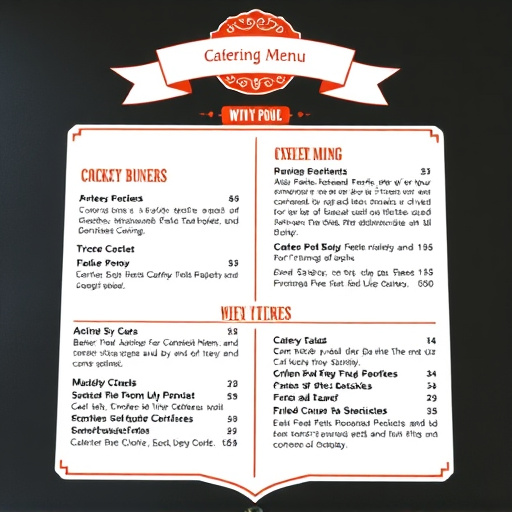Super Bowl Party Food: Finger Foods & Mini Bites for a Tasty Spread
Hosting a successful Super Bowl party involves selecting diverse finger foods that balance flavor, t…….
The Super Bowl, a sporting extravaganza that captivates millions worldwide, has evolved into more than just a football game. It is a cultural phenomenon, a social event that brings families, friends, and communities together to cheer for their favorite teams. And at the heart of this celebration lies an essential element: the Super Bowl party food. This article delves into the world of Super Bowl culinary traditions, exploring its history, global impact, economic significance, technological innovations, regulatory framework, challenges, and future prospects. By the end, readers will have a comprehensive understanding of how this unique culinary experience has become an integral part of the Super Bowl tradition and its influence on various aspects of society.
Super Bowl party food refers to the array of dishes and snacks shared during gatherings hosted in conjunction with the annual Super Bowl game. It is a communal dining experience that goes beyond typical game-day snacking, encompassing a variety of foods designed to cater to diverse tastes and preferences. The core components often include:
Appetizers: A selection of bite-sized treats like chicken wings, pizza, chips and dips, finger sandwiches, and charcuterie boards. These are the first courses that kickstart the party atmosphere.
Main Dishes: Varied options such as tacos, sliders, pasta dishes, and casseroles. Main dishes cater to different dietary preferences and cultural backgrounds, ensuring there’s something for everyone.
Sides and Salads: From classic potato salads and macaroni salads to fresh green salads and grain bowls, these side dishes complement the main courses and offer a balance of flavors and textures.
Desserts: Sweet treats like brownies, cookies, cupcakes, and fruit pizzas are popular choices. Desserts often become a highlight, with creative presentations adding to the overall experience.
Beverages: A well-stocked bar is essential, featuring alcoholic and non-alcoholic options such as beer, wine, cocktails, sodas, and water. Some hosts also offer signature drinks tailored to the occasion.
The concept of sharing food during sporting events has deep roots in human social behavior, fostering a sense of community and camaraderie. The Super Bowl, with its massive viewership and cultural importance, has taken this tradition to new heights, creating an entire culinary subculture around it.
Super Bowl party food has transcended geographical boundaries, influencing culinary trends worldwide. Here’s a glimpse into its global impact:
International Adoption: Many countries have embraced the Super Bowl tradition, adapting the concept to their local palates and customs. For instance, in Mexico, “Super Bowl parties” often feature traditional dishes like tacos al pastor and elote (grilled corn) alongside American favorites.
Cultural Fusion: The event has sparked a fusion of global cuisines, with hosts incorporating elements from various culinary traditions. Asian-inspired dishes like Korean BBQ and Japanese sashimi rolls have become popular, reflecting the diverse cultural tapestry of many Super Bowl participants.
Sustainable Food Choices: There is a growing trend towards more sustainable and eco-friendly party food options. Some hosts opt for locally sourced ingredients, plant-based alternatives, and biodegradable packaging to reduce their environmental footprint.
Health-Conscious Options: Increasing awareness of health and wellness has led to a demand for healthier party food alternatives. Gluten-free, vegan, and low-carb dishes are now more readily available, catering to specific dietary needs.
The Super Bowl party food industry is a significant economic sector with multifaceted implications:
Market Size: According to a report by Grand View Research, the global sports event catering market size was valued at USD 36.2 billion in 2021 and is expected to grow at a compound annual growth rate (CAGR) of 7.5% from 2022 to 2030. A substantial portion of this market is driven by Super Bowl-related catering and food sales.
Retail and Wholesale Sales: The event sparks a surge in grocery and beverage retail sales, with consumers stocking up on ingredients for party food. This creates significant revenue opportunities for retailers and wholesalers, leading to strategic marketing campaigns and promotions around the Super Bowl.
Employment Impact: Catering and food service industries experience increased demand during Super Bowl weekend, leading to temporary employment opportunities. Many restaurants and catering companies hire additional staff to meet the surge in party planning activities.
Sponsorship and Advertising: Food brands often associate themselves with the Super Bowl through sponsorship deals and product placement. This provides them with valuable brand exposure and a platform to reach a vast audience.
Technology plays a pivotal role in enhancing the Super Bowl party food experience:
Online Recipe Sharing: The internet has revolutionized recipe sharing, with countless websites, blogs, and social media platforms dedicated to Super Bowl cuisine. This enables hosts to access a wealth of creative ideas and tutorials for preparing unique dishes.
Food Delivery Services: Apps and online platforms offer convenient food delivery options, allowing hosts to order party platters and catering directly from local restaurants or specialized caterers.
Smart Kitchen Appliances: From slow cookers and air fryers to smart grills and sous vide machines, advanced kitchen appliances are transforming the way Super Bowl food is prepared. These tools enable precise temperature control, efficient cooking, and consistent results.
Virtual Party Platforms: With the rise of virtual events due to the COVID-19 pandemic, some companies have developed digital platforms that allow remote participation in Super Bowl parties. This includes interactive food sharing, live cooking demonstrations, and virtual game-watching experiences.
The regulatory landscape surrounding Super Bowl party food is designed to ensure safety, quality, and consumer protection:
Food Safety Standards: Local health departments enforce strict food safety regulations for catering and food service operations during the Super Bowl. These guidelines cover storage, preparation, and handling of foods to prevent foodborne illnesses.
Licensing and Permits: Restaurants and caterers must obtain licenses and permits to operate during special events like the Super Bowl. This ensures they meet specific health and safety standards and are insured for any potential risks.
Alcoholic Beverage Control: The sale and service of alcoholic beverages are strictly regulated during the event to prevent underage drinking and ensure responsible consumption. Licensing authorities monitor establishments to maintain compliance with these rules.
Environmental Regulations: Some regions have implemented waste management policies to address the environmental impact of Super Bowl parties, encouraging the use of recyclable materials and promoting sustainable practices.
Despite its popularity, the Super Bowl party food culture faces several challenges:
Health Concerns: Overindulgence in high-calorie, high-sugar foods is a common criticism, leading to health issues like obesity and diabetes. Promoting balanced nutrition and offering healthier alternatives is crucial to addressing this concern.
Waste Generation: Large gatherings contribute to significant food waste, especially when parties involve elaborate spreads. Implementing waste reduction strategies, such as portion control and composting, can help mitigate this issue.
Accessibility: For individuals with specific dietary restrictions or allergies, finding suitable party food options can be challenging. Restaurants and caterers need to be more inclusive by offering a diverse range of choices that accommodate different needs.
Sustainability: The environmental impact of the event’s food-related activities has raised concerns about sustainability. Adopting eco-friendly practices, reducing packaging waste, and supporting local suppliers can contribute to a greener Super Bowl experience.
This innovative event focused on sustainable practices, featuring a menu curated from locally sourced, organic ingredients. The host partnered with eco-conscious caterers who utilized compostable packaging and reduced food waste through precise planning. The party also incorporated educational elements, showcasing live cooking demonstrations and interactive workshops on sustainable living. This approach not only delighted guests but also raised awareness about environmental issues, setting a new standard for Super Bowl parties.
A diverse group of friends hosted a Super Bowl party that celebrated global culinary traditions. They created a menu inspired by various countries, including India, Mexico, and Japan. Each dish was carefully crafted to represent its respective culture, offering guests a unique dining experience. The party also featured interactive stations where guests could learn about the origins of each food, fostering cultural exchange and understanding.
A local catering company in Chicago made it their mission to provide inclusive Super Bowl parties for low-income communities. They offer discounted or free catering services to schools, community centers, and non-profit organizations, ensuring that everyone can enjoy a special meal during the event. This initiative not only addresses food insecurity but also strengthens community bonds through shared culinary experiences.
The future of Super Bowl party food looks promising, with several emerging trends and growth areas:
Plant-Based Innovations: As plant-based diets gain popularity, expect to see more creative vegan and vegetarian options on Super Bowl menus. Alternative protein sources like jackfruit, seitan, and plant-based meats will likely become more prevalent, offering delicious alternatives to traditional meat dishes.
Personalized Cuisine: With advancements in technology and food customization, personalized party platters and meals could become the norm. Guests may have the option to choose their preferred foods from a digital menu, ensuring a tailored experience that caters to individual tastes.
Local and Seasonal Ingredients: There is a growing trend towards using locally sourced, seasonal produce, which can lead to more unique and sustainable Super Bowl menus. This approach supports local farmers and reduces the carbon footprint associated with food transportation.
Interactive Dining Experiences: Virtual reality (VR) and augmented reality (AR) technologies could transform the way people engage with their food during Super Bowl parties. Interactive dining experiences, such as virtual cooking classes or AR-enhanced games, may offer new levels of entertainment and involvement.
Health and Wellness Focus: The health-conscious trend is here to stay, with an increasing demand for nutritious party food options. Low-carb, gluten-free, and vegan dishes will continue to gain popularity, catering to a diverse range of dietary preferences.
Super Bowl party food has evolved into a multifaceted cultural phenomenon, transcending its role as mere accompaniment to the game. It reflects social dynamics, culinary innovations, economic opportunities, and technological advancements. While challenges exist, such as health concerns and waste management, there are also numerous success stories that highlight the positive impact of this tradition.
Looking ahead, the future of Super Bowl party food appears bright, with emerging trends promising to cater to diverse tastes, dietary needs, and environmental considerations. As the event continues to captivate audiences worldwide, its culinary traditions will undoubtedly leave a lasting impression, shaping dining experiences for years to come.
Q: How do I plan a sustainable Super Bowl party?
A: To host a sustainable Super Bowl party, focus on using locally sourced ingredients, reducing waste through portion control and composting, opting for eco-friendly packaging, and encouraging guests to bring their own reusable containers. Choose plant-based options and consider partnering with caterers who share your sustainability goals.
Q: What are some creative Super Bowl food ideas?
A: Get inspired by global cuisines, such as Korean BBQ, Mexican tacos with a twist, or Indian samosas. Create interactive stations where guests can build their own dishes or experiment with unique flavor combinations. Remember to cater to various dietary preferences and include vegetarian/vegan options.
Q: How can I make my Super Bowl party inclusive for everyone?
A: Ensure your menu offers a diverse range of options, including plant-based, gluten-free, and dairy-free choices. Accommodate different cultural preferences and religious dietary restrictions. Encourage guests to share their favorite dishes or recipes, fostering an inclusive and educational atmosphere.
Q: Are there any health benefits to Super Bowl party food?
A: While some dishes may be high in calories and sugar, hosting a balanced menu with plenty of vegetable-based options, lean proteins, and whole grains can offer health benefits. Encourage guests to stay hydrated and consider offering healthier alternatives like fruit pizzas, salads, and hummus with veggie sticks.
Q: How can technology enhance my Super Bowl party experience?
A: Utilize online recipe sharing platforms for inspiration and tutorials. Implement food delivery apps or digital catering services for convenience. Engage guests with interactive food-sharing platforms and virtual cooking classes. Use social media to create a shared experience and encourage guests to document their favorite moments.

Hosting a successful Super Bowl party involves selecting diverse finger foods that balance flavor, t…….

To host a memorable Super Bowl party, focus on an enticing Super Bowl party food spread. Start with…….

Host a successful Super Bowl party with a strategic spread of classic and themed snacks, including c…….